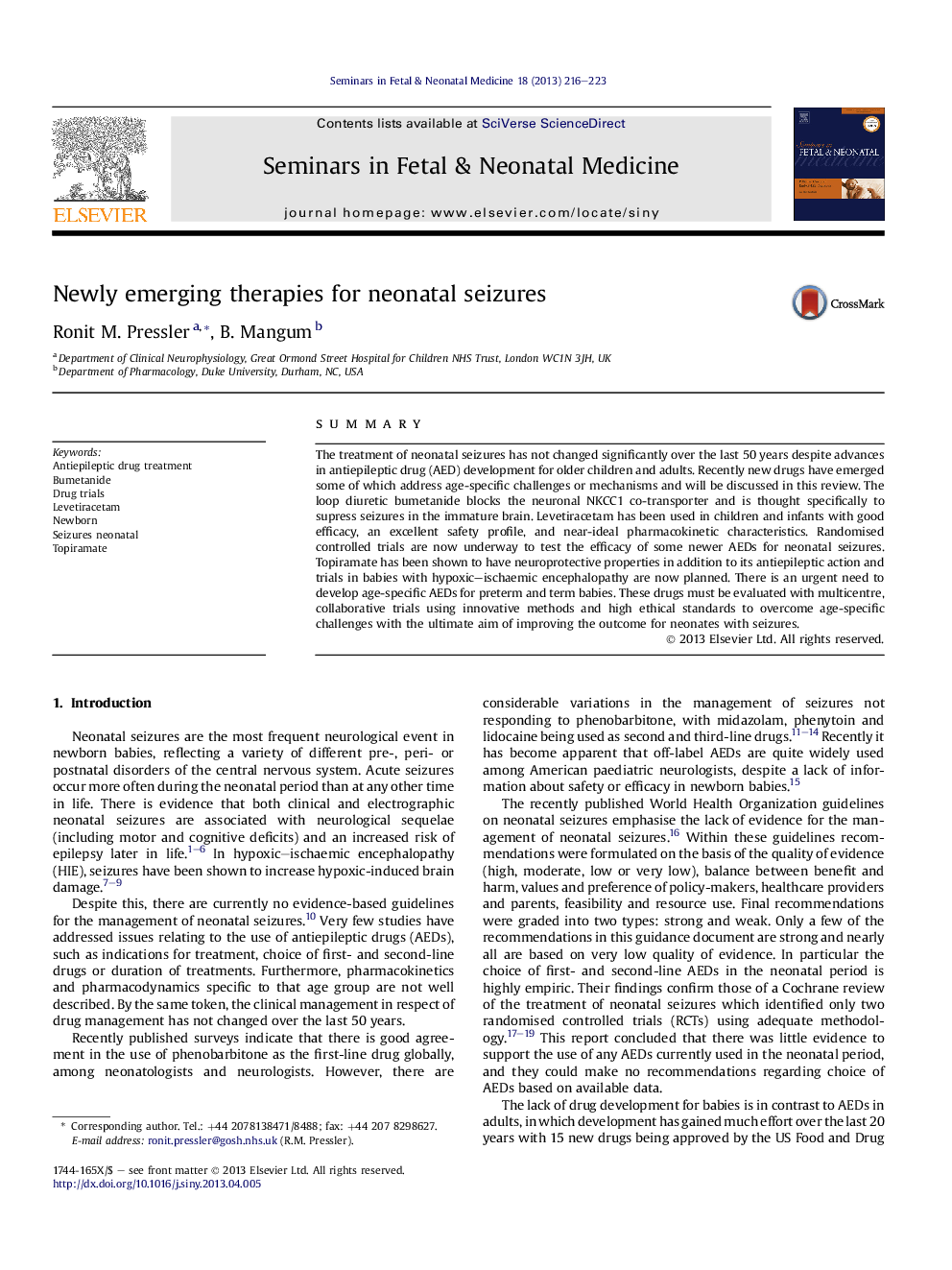| Article ID | Journal | Published Year | Pages | File Type |
|---|---|---|---|---|
| 3974168 | Seminars in Fetal and Neonatal Medicine | 2013 | 8 Pages |
SummaryThe treatment of neonatal seizures has not changed significantly over the last 50 years despite advances in antiepileptic drug (AED) development for older children and adults. Recently new drugs have emerged some of which address age-specific challenges or mechanisms and will be discussed in this review. The loop diuretic bumetanide blocks the neuronal NKCC1 co-transporter and is thought specifically to supress seizures in the immature brain. Levetiracetam has been used in children and infants with good efficacy, an excellent safety profile, and near-ideal pharmacokinetic characteristics. Randomised controlled trials are now underway to test the efficacy of some newer AEDs for neonatal seizures. Topiramate has been shown to have neuroprotective properties in addition to its antiepileptic action and trials in babies with hypoxic–ischaemic encephalopathy are now planned. There is an urgent need to develop age-specific AEDs for preterm and term babies. These drugs must be evaluated with multicentre, collaborative trials using innovative methods and high ethical standards to overcome age-specific challenges with the ultimate aim of improving the outcome for neonates with seizures.
